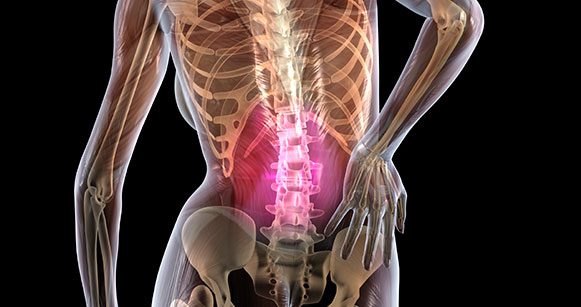
Testing paracetamol as a back pain treatment
Project’s background and aims
Approximately nine out of ten people visiting a doctor because of low back pain don’t have a serious problem with their spine. For these patients, back pain is likely the result of strain or stress to lumbar spinal structures, including the muscles, ligaments or discs or a combination of all three.
Clinical practice guidelines (PDF 1.4MB) in Australia, which doctors use to help treat their patients, recommended that people suffering from low back pain should, in the first instance, be recommended a simple painkiller, such as paracetamol. World-wide, paracetamol is the most widely used over-the counter medicine for musculoskeletal conditions
The PACE study led by Professor Chris Maher, formerly at The George Institute for Global Health, set out to investigate if paracetamol was effective in pain relief.
Results
The study, published in 2014 in The Lancet, examined 1,643 people experiencing acute uncomplicated low back pain and presenting to primary care in Australia. One group received a placebo, another was told to take paracetamol as needed and a third asked to take extended-release paracetamol three times a day.
"We found that it didn't really matter whether people took a placebo, took paracetamol as needed or took paracetamol regularly through the day, there was no difference in any of the outcomes," said Professor Maher.
"It didn't speed time to recovery; it didn't improve their pain; it didn't improve their disability."
This was the world’s first large scale placebo-controlled trial and demonstrated that taking paracetamol does not speed recovery or reduce pain compared to placebo.
Collaboration
Following the PACE trial, a successful grant was obtained with colleagues in the Netherlands. It’s a multi-arm trial that will extend the PACE trial by additionally testing advice and an anti-inflammatory medicine (diclofenac) in treating back pain.
Impact
The PACE trial challenged the universal endorsement of paracetamol in guidelines by demonstrating that it was no more effective than a placebo. PACE generated major media attention including front page of The Times in London. Altmetric score = 847 (16th highest of 16,082 Lancet articles). 66 citations, published with editorial, synopses in seven journals. Listed by JAMA Intern Med as one of the 10 most important studies of 2014.
The new (i.e. 2016) National Institute for Health and Care Excellence (NICE) guideline on management of low back pain no longer endorses paracetamol for back pain and cites PACE as the reason it changed its recommendation.
Expected health benefits
The PACE trial has been followed up by extensive research into back pain at The George Institute. A systematic review published in February 2016 found that exercise, alone or in combination with education is the only available intervention that has evidence it may prevent lower back pain. The review considered 23 published reports, which included 30,850 participants in 21 different randomised clinical trials. Work is now underway on a large definitive trial at The George Institute to confirm whether exercise and education does indeed prevent back pain. Low back pain is the leading cause of disability in Australia. The health costs for managing low back pain are over $4.8 billion per annum. Even modest improvements in the prevention and treatment of low back pain will provide enormous health, social and economic benefits to Australia.

